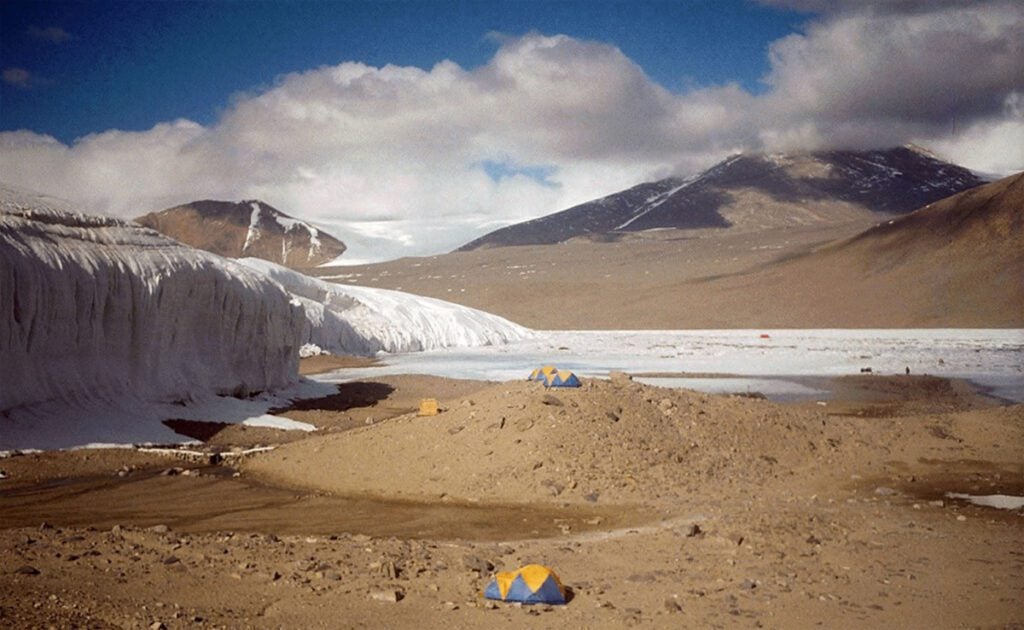There is a location on Earth that is so unlike any other location that it has been used to test equipment on Mars. The Antarctic Dry Valleys region is one of the world’s most extreme deserts, but that’s only the beginning of its peculiarities. Do you know What are the McMurdo Dry Valleys?
There is an area in Antarctica that is so dry that no ice can form. It hasn’t rained in nearly 2 million years and is home to some unusual lifeforms.
The Barren Part of Antarctica
The Dry Valleys are a very unusual part of Antarctica; they exist due to the positioning of the Transantarctic Mountain Range, which forces air flowing over it upwards, causing it to lose moisture; as a result, the valleys are in a precipitation shadow (no snow or rain falls). The mountains also prevent ice from the East Antarctic Ice Sheet from flowing down the valleys, and finally, strong katabatic winds of up to 320km/h (200mph) blowing down from the interior, combined with low humidity, cause the ice from the glaciers that do discharge into the valleys to evaporate. They have one of the most extreme desert climates on the planet, a cold desert with mean annual temperatures ranging from -14C to -30C depending on location; windier sites are less cold.
They cover an area of approximately 4,800 square kilometers and are located approximately 97 kilometers from McMurdo Station, where they have been the subject of extensive research for many years due to a variety of phenomena.
Bull Pass in the Dry Valleys, above left. The temperature in the ice and snow-free area is little or no different than in the adjacent ice-covered regions, and the absence of ice is explained by local geography. The map to the right depicts some of the Dry Valleys’ features, including Bull Pass. The Ross Sea is in the center, and the Antarctic interior is on the bottom left. Approximate map 70 x 75km. (Source: Ocean Wide)
Discovering the Dry Valleys
The three largest valleys are Taylor Valley, Wright Valley, and Victoria Valley. Taylor Valley was discovered during Scott’s Discovery Expedition (named after the ship) in 1901-1904. Griffith Taylor surveyed it in greater detail during Scott’s later Terra Nova Expedition in 1910-1913, after whom the feature was named. High mountain peaks surround the valley, and no further exploration of the surroundings was undertaken at the time. It was in the 1950s that additional valleys and their extent were discovered using aerial photographs. (Source: Ocean Wide)
What is Life Like in These Dry Valleys?
When Captain Scott and his expedition crew first discovered the Dry Valleys in 1903, they thought they were lifeless. However, it turns out that a wide range of aquatic ecosystems thrives in the harsh climate of the McMurdo Dry Valleys due to glacier melt-streams that flow into the ice-covered lakes.
This flow is not constant but depends on various factors, including temperature, wind, and sunlight. The flow levels fluctuate between a trickle and a torrent throughout the day, month, and year, implying that only certain organisms can survive in the unusual Dry Valleys environment.
Despite the harsh conditions, there are diverse species in the McMurdo Dry Valleys, as few other plants or animals compete with (or eating) them. One of the most amazing aspects of cyanobacteria survival is their ability to kick-start the photosynthesis process within 48 hours of receiving liquid water, despite being a stress-tolerant species. (Source: Ocean Wide)
